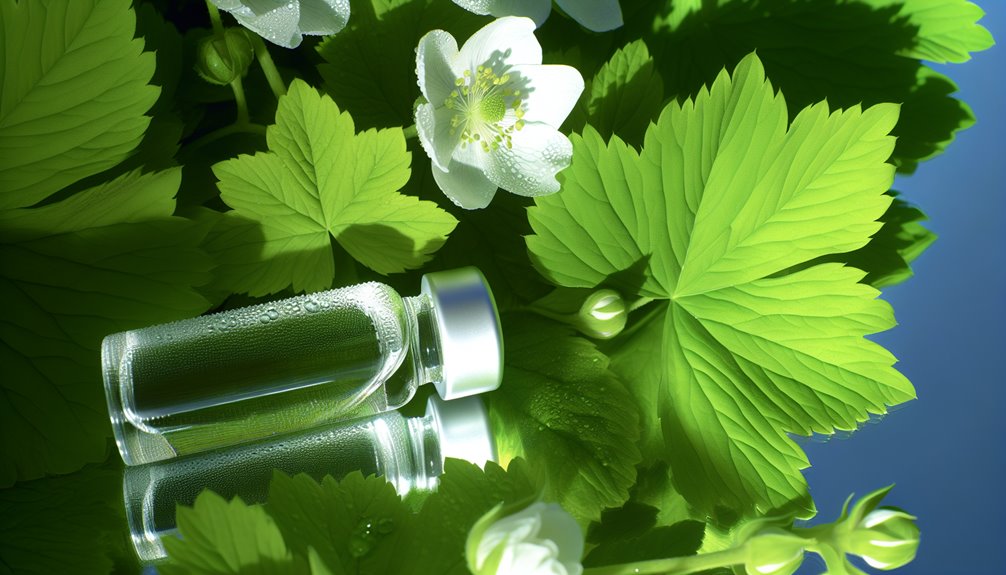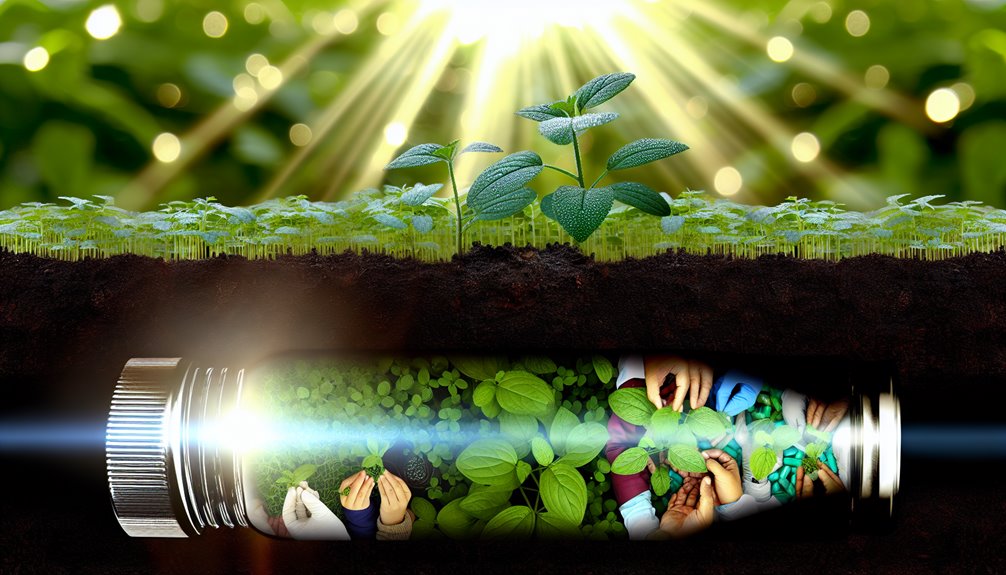You may not know that “green” preservatives can outperform some synthetics while lowering aquatic toxicity. When you choose treatments built on renewable, traceable actives, you’re applying green chemistry—not marketing—to your skin. We use certified supply chains, low-impact preservation systems, and safety testing that spans patch studies to post-market surveillance. You’ll see efficacy data, not vague claims, and labels you can verify. Next, you’ll learn how to spot real certifications and avoid clever greenwashing.
What “Green Ingredients” Mean in Practice

Although “green” sounds simple, in practice it refers to ingredients sourced and produced with verifiable lower environmental and human-health impact—think renewable or upcycled feedstocks, transparent supply chains, safer hazard profiles, and responsible end-of-life. You assess claims using third-party standards, life-cycle data, and clear supplier documentation. Apply green chemistry principles: design for minimal toxicity, high atom economy, and efficient processes with low energy and water use. Prioritize sustainable sourcing that protects biodiversity, respects labor, and guarantees traceability. Favor low-VOC solvents, biodegradable excipients, and concentrated formats to reduce packaging. Track metrics, audit suppliers, and communicate evidence so clients can trust your stewardship.
Plant-Based Actives and How They Work
When you reach for plant-based actives, you’re tapping molecules evolved for defense, repair, and signaling that interact with human biology through defined pathways.
You leverage polyphenols, terpenes, and peptides that modulate inflammation, oxidative stress, melanogenesis, and barrier integrity. Their plant potency depends on species, growth stage, and processing. Rigorous active extraction techniques—cold-pressing, supercritical CO2, or hydroethanolic methods—preserve bioactivity and remove unwanted fractions. You then match mechanisms to needs: niacin-rich botanical complexes boost ceramide synthesis; flavonoids scavenge ROS and calm NF-κB; azelaic and salicylic derivatives regulate keratinization; peptides cue collagen. Standardized assays confirm dose, purity, and stability, supporting consistent, service-minded outcomes.
Preservatives With a Lower Environmental Footprint

Why prioritize low-impact preservatives? You protect clients from microbial risk while reducing downstream harm. Choose systems with rapid biodegradability, low aquatic toxicity, and effective performance at minimal dosages. Consider organic acids (like benzoic, sorbic), glyceryl caprylate, caprylyl glycol, and probiotic-derived peptides. These natural alternatives can stabilize water-based products without sensitizer-heavy burdens. Validate them with challenge tests, pH compatibility checks, and realistic-use stability studies.
You also support eco friendly formulations by minimizing rinse-off load and avoiding bioaccumulative substances. Optimize packaging hygiene, airless dispensers, and good manufacturing practice to lower preservative demand. Document concentrations, exposure margins, and disposal guidance to safeguard people and ecosystems.
Decoding Certifications and What They Signal
Even with sincere eco claims everywhere, certifications help you verify what’s real and comparable across brands. You should know what different certification types measure and what they don’t. Some verify ingredient origin, others assess safety profiles, biodegradability, or manufacturing controls. Check whether schemes align with regulatory standards in your region; credible programs publish criteria, audit methods, and noncompliance actions. Look for independent, third-party verification and transparent scope statements, not just logos. Read cutoff levels for restricted substances, fragrance allergens, and packaging requirements. When in doubt, review the standard’s technical dossier. You’ll guide clients confidently by translating criteria into practical, safer choices.
Sourcing Standards: Traceability From Farm to Formula

Certifications set the bar; sourcing standards show how a product meets it from seed to shelf. You need transparent documentation that follows each botanical through the supply chain, verifying origin, handling, and integrity. Ethical sourcing isn’t a slogan; it’s proof of fair labor, responsible land use, and verifiable records.
- Confirm farm-level GPS data and crop histories.
- Require chain-of-custody audits and reconciled lot numbers.
- Validate supplier ESG metrics and living-wage compliance.
- Track transport conditions and time-temperature logs.
- Match extraction batches to finished-goods labels.
With this rigor, you can honor patients and planet, prevent substitution or dilution, and guarantee each formula reflects accountable stewardship.
Safety Testing: From Patch to Post-Market Surveillance
Although botanicals carry a “natural” halo, you still need a disciplined safety program that starts before first use and continues after launch. Begin with ingredient screening for allergens, contaminants, and prohibited substances under applicable safety regulations. Conduct in vitro irritation and sensitization assays, then verify compatibility with controlled patch testing on diverse skin types. Establish conservative use levels and clear instructions.
Before release, complete a cosmetic product safety assessment, document margins of safety, and implement stability and microbiological controls. After launch, monitor complaints, adverse events, and usage patterns. Analyze signals promptly, update labeling or formulas as needed, and report per jurisdictional requirements to protect every client.
Efficacy Without Compromise: Data Behind the Claims
A credible green treatment proves efficacy with the same rigor as any advanced cosmetic: define a primary endpoint, pre-register protocols, and test against appropriate controls. You honor clients by requiring transparent, reproducible data on bioactive compounds and outcome measures from well-designed clinical trials.
- Specify inclusion criteria and power calculations before enrollment.
- Use standardized concentrations of bioactive compounds with verified purity.
- Compare against placebo and benchmark actives; report effect sizes and confidence intervals.
- Track adherence, adverse events, and durability of results at predefined timepoints.
- Publish full protocols and datasets to enable independent verification.
When evidence aligns across studies, you can recommend confidently—efficacy without compromise.
Spotting Greenwashing and Reading Labels Smarter
With standards for proof set, the next safeguard is spotting greenwashing and reading labels with rigor. Build label literacy: verify claims with third-party certifications (e.g., ECOCERT, COSMOS, USDA Organic) and batch-level documentation. Scrutinize green labels; “natural,” “eco,” or “clean” aren’t regulated. Check INCI lists: prioritize full botanical names, avoid vague “fragrance” unless allergen-disclosed. Seek concentration transparency, not just star ingredients. Confirm biodegradability, cruelty-free status, and packaging recyclability via independent audits. Beware irrelevant claims like “paraben-free” when class isn’t used. Cross-check safety data sheets and evidence summaries. When uncertain, ask suppliers for test reports and traceability. Your diligence protects clients.
Conclusion
As we wrap up, I want to emphasize how important it is to me that we prioritize safety, effectiveness, and sustainability in everything we do at Mosquito Eliminators of South MS. I truly believe in using plant-based ingredients and low-impact solutions that are gentle on both you and the environment. I invite you to explore our offerings and see how we can help you create a safe, enjoyable outdoor space. Please visit us at mosquitoeliminatorsms.com or give us a call at (601) 336-2277. I’m here to answer any questions you may have and help you find the best mosquito control solutions for your needs. Thank you for considering us, and I look forward to connecting with you soon!

